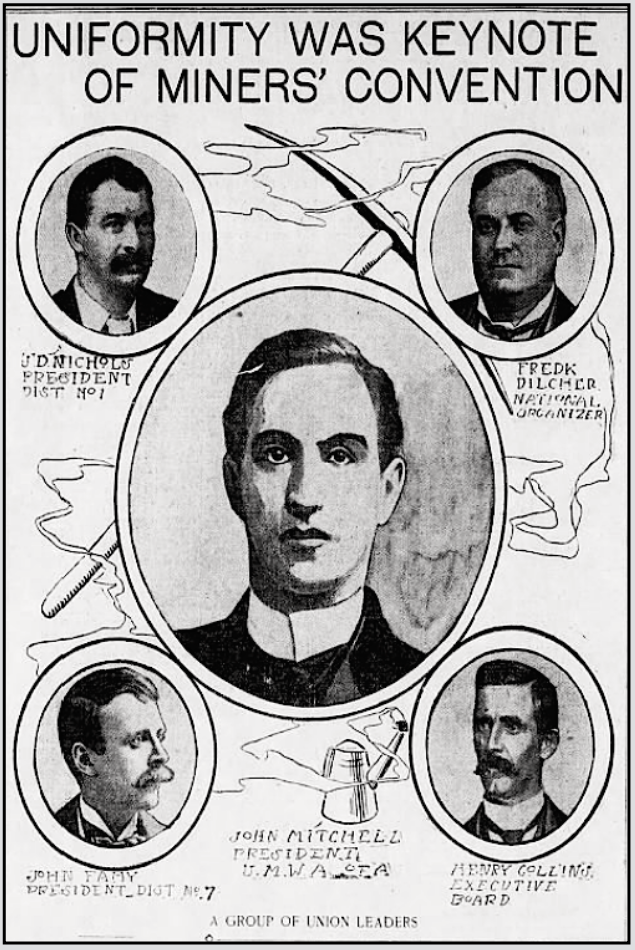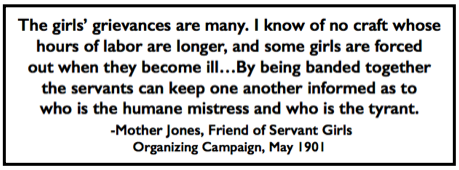 —————
—————
Hellraisers Journal – Wednesday July 10, 1901
Mother Jones News Round-Up for June 1901, Part II
Found Described as “Servant Girls’ Friend,” Plans to Organize
From Montana’s Great Falls Daily Tribune of June 10, 1901:
From the Great Falls Daily Tribune of June 11, 1901:
MOTHER JONES’ PLAN.
A dispatch in yesterday’s Tribune told us that “Mother” Jones was meeting with success in her efforts to organize the servants girls of New York into unions. Also that the movement was likely to spread all over the country.
It has been quite a common belief that the girls had things about their own way as it is, but the “Mother” Jones insists that it is a mistake, and she wants to improve their condition. Here are some of the changes she wants made:
Ten hours a day work and no more. An increase of the wages according to the size of the house and the work required. No one shall work for less than $3 per week. Cooks shall not act as ladies’ maids or take care of babies. Nurse girls shall not be required to act as cooks. It shall not be necessary to stay in at nights while the mistress goes out. If more than ten hours work shall be required a double shift must be employed. An amusement room shall be furnished so that the girls shall not be compelled to sit in the kitchen. Visitors shall be allowed to call on them any night they are off duty. Wages shall be paid every week.
[Emphasis added.]

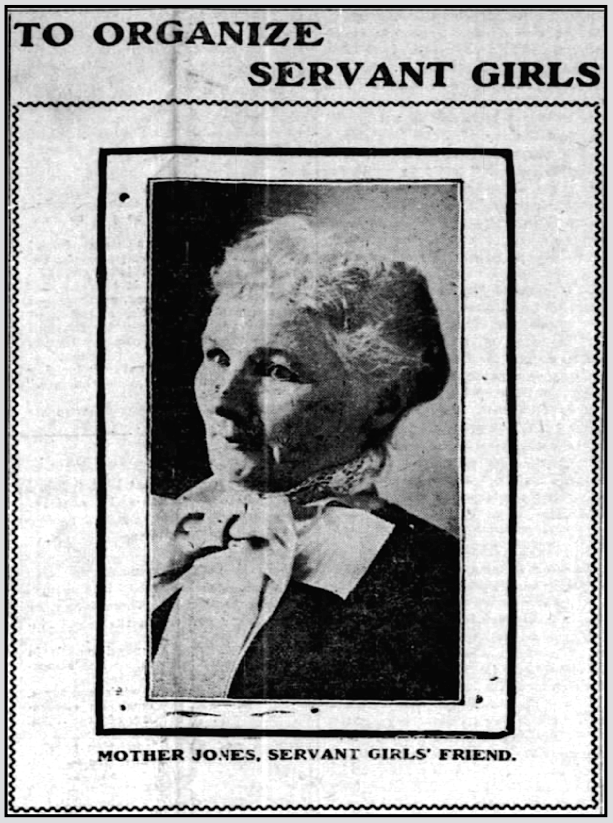
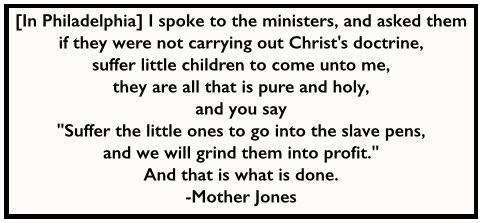 —————
—————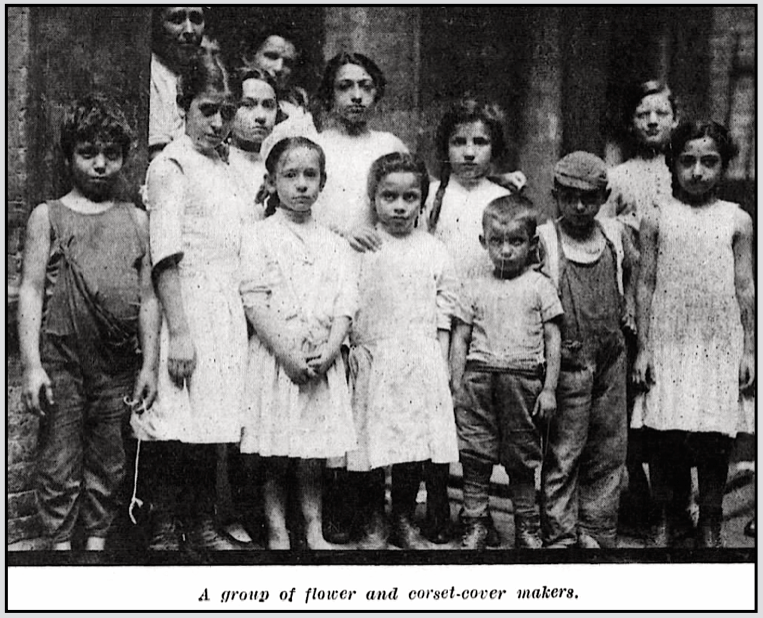
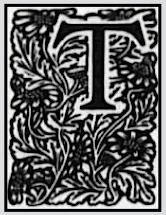
 —————-
—————- ——
—— —–
—–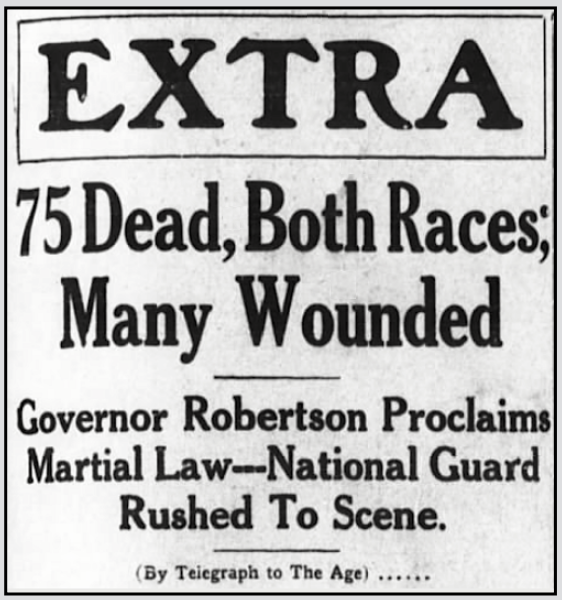
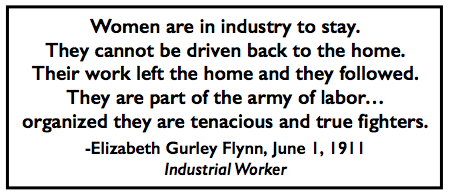 ———-
———-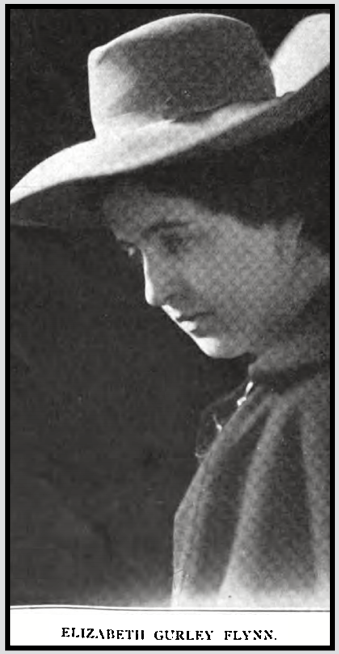
 —————
—————
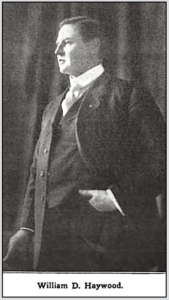 And in Wales it was my good fortune to be there, not to theorize but to take part in the general strike among the coal miners. Previous to my coming, or in previous strikes, the Welsh miners had been in the habit of quitting work, carrying out their tools, permitting the mine managers to run the pumps, allowing the engine winders to remain at work, carrying food down to the horses, keeping the mines in good shape, while the miners themselves were marching from place to place singing their oldtime songs, gathering on the meeting grounds of the ancient Druids and listening to the speeches of the labor leaders; starving for weeks contentedly, and on all occasions acting most peaceably; going back to work when they were compelled to by starvation.
And in Wales it was my good fortune to be there, not to theorize but to take part in the general strike among the coal miners. Previous to my coming, or in previous strikes, the Welsh miners had been in the habit of quitting work, carrying out their tools, permitting the mine managers to run the pumps, allowing the engine winders to remain at work, carrying food down to the horses, keeping the mines in good shape, while the miners themselves were marching from place to place singing their oldtime songs, gathering on the meeting grounds of the ancient Druids and listening to the speeches of the labor leaders; starving for weeks contentedly, and on all occasions acting most peaceably; going back to work when they were compelled to by starvation.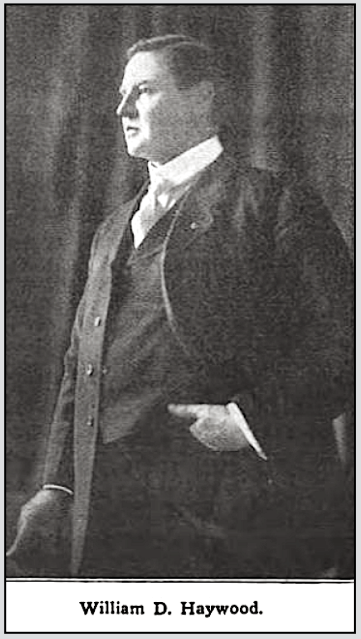 Comrades and Fellow-Workers:
Comrades and Fellow-Workers: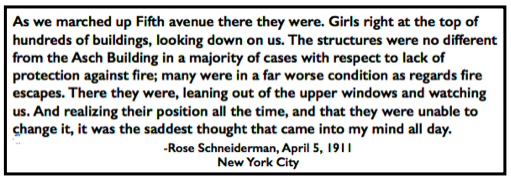 —————
—————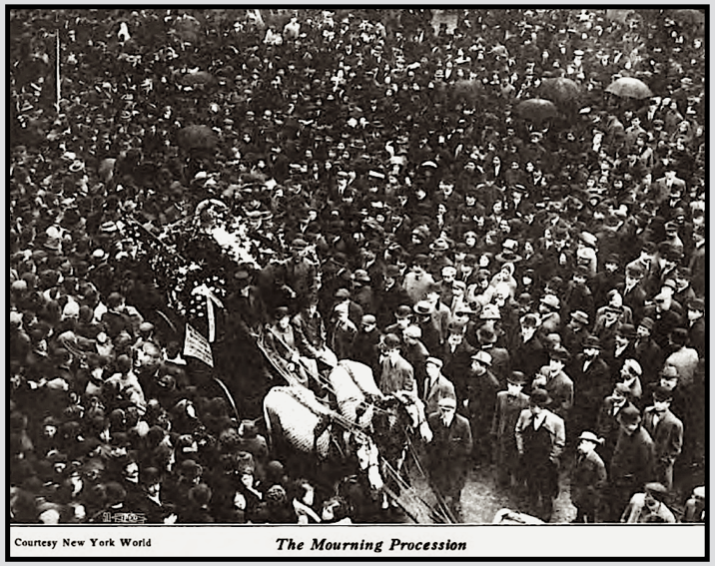
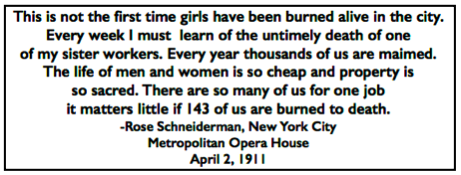 —————
—————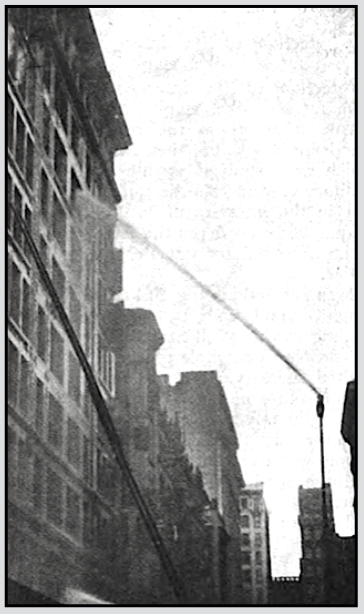
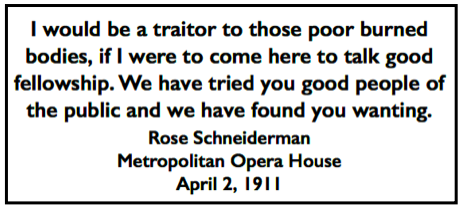 —————
—————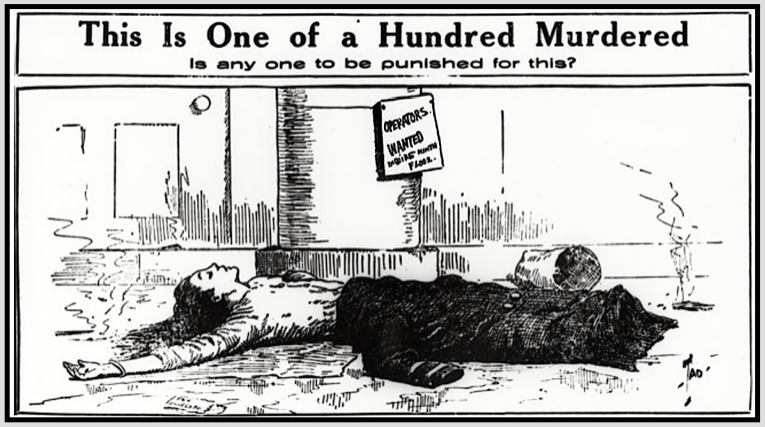
 ———-
———-
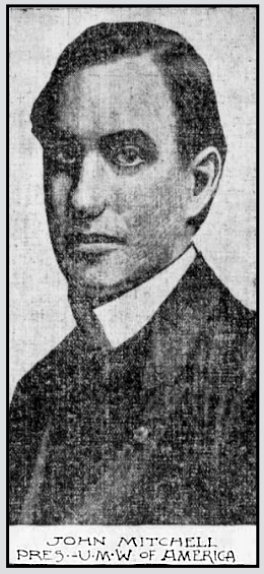 National Organizer Chris Evans
National Organizer Chris Evans 